由约翰 John Feliks (回到英语版本 Return to English) *不可看见的汉字?(Cannot see Chinese characters?) 这里全文html
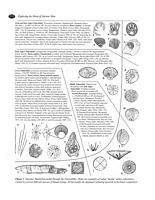 图1 |
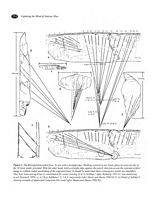 图2 |
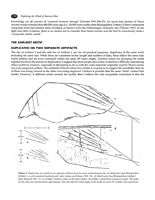 图3 |
| 人类学出版物: | 化石的冲击 | 考虑旧石器时代的辐形艺术样式 | Bilzingsleben史前图表和几何 | 早旧石器时代的金黄比率 |
| 出版物、影片工作和艺术性的节目 | 在上古的时期 | 更新世的联合 |
 图1 |
 图2 |
 图3 |
摘要: 在 大多数这个过去世纪期间,学者教更加早期的人比35,000年是下等对现代人。 然而,早期的人的编年史进行剧烈的修正。 能力一次归因于只有现代人现在是能力被追踪对更加早期的时期和我们的古老祖先, " 人的erectus" (从北京的相似的古代人)。 在这转折的主要突破是一个图表标号主题,本质上“辐形”主题,开始被开发, "的罗伯特Bednarik的理论; 人的erectus, " 早在350,000年前。 为更低旧石器时代,我不仅支持Bednarik理论,但是我为语言和自我意识的连接的观察也提供证据。 本文包括七个图。 图1在考古学纪录在辐形主题上展示原始人类的兴趣如见证。 图2至5建议及早已知的辐形主题与古老Bilzingsleben人民相关是许多,质量和一贯性。 终于,图6和7连接辐形主题到扩张人的手。 我建议早兴趣在辐形主题上是对手的熟悉提示的象征主义和人的自我意识的标志。
| 如果您无法看汉字(即,如果您看箱子仅行,问号、无意义的信件等等)您可能需要使能在您的计算机上的东亚字符。 If you are unable to see the Chinese characters (e.g., if you see only rows of boxes, question marks, meaningless letters, etc.) you may need to enable East Asian characters on your computer. 为英语指示点击这里。 CLICK HERE for English instructions. |
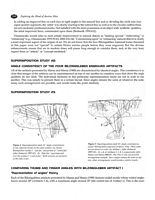 *Musings on the Palaeolithic Fan Motif is one of four thesis papers
offering a completely new perspective regarding early peoples such as
Homo erectus, Homo ergaster, Neanderthals, and Homo heidelbergensis. It was a "requested" paper first submitted for review
and publication on August 9, 2004. This page shows five of the paper's
seven figures. Click on each thumbnail for an enlarged view. You
can then click on that image for an even larger image showing
more detail.
*Musings on the Palaeolithic Fan Motif is one of four thesis papers
offering a completely new perspective regarding early peoples such as
Homo erectus, Homo ergaster, Neanderthals, and Homo heidelbergensis. It was a "requested" paper first submitted for review
and publication on August 9, 2004. This page shows five of the paper's
seven figures. Click on each thumbnail for an enlarged view. You
can then click on that image for an even larger image showing
more detail.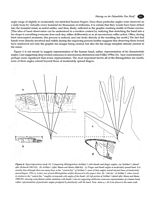 Duplicated
motifs (such as written or spoken words) are the hallmark of language.
Prior to recognizing these two motifs as either duplicates or
variations of each other, most proponents of early language used
unrelated references to "infer" language in early peoples, e.g., "If
they could get from
here to there then they must have had language," or "If they had the
right vocal tract or the right genetic traits, they probably had a
simple language." The
association between these two motifs and similar associations between
other motifs at Bilzingsleben were fully
demonstrated with final and unambiguous proofs in the censored data presented in The Graphics of
Bilzingsleben.
Duplicated
motifs (such as written or spoken words) are the hallmark of language.
Prior to recognizing these two motifs as either duplicates or
variations of each other, most proponents of early language used
unrelated references to "infer" language in early peoples, e.g., "If
they could get from
here to there then they must have had language," or "If they had the
right vocal tract or the right genetic traits, they probably had a
simple language." The
association between these two motifs and similar associations between
other motifs at Bilzingsleben were fully
demonstrated with final and unambiguous proofs in the censored data presented in The Graphics of
Bilzingsleben.Feliks, J. 1998. The impact of fossils on the development of visual representation. Rock Art Research 15: 109-34. (这里中国版本页)
Feliks, J. 2006. Phi in the Acheulian: Lower Palaeolithic intuition and the natural origins of analogy. In Bednarik, R. G. and D. Hodgson (eds), Pleistocene palaeoart of the world, pp. 11-31. Proceedings of the XV UISPP World Congress (Lisbon, 4-9 September 2006), BAR International Series 1804, Oxford.
Feliks, J. 2009. A Lot of Gold in the Mix: Review of Fragment from a Nonfiction Reader. Pre-publication review of the debut science thriller by Warren Fahy (see quotation on the author's review page under FRAGMENT: Reviews).
Feliks, J. 2009 (in press). The graphics of Bilzingsleben: Sophistication and subtlety in the mind of Homo erectus. Proceedings of the XV UISPP World Congress (Lisbon, 4-9 September 2006), BAR International Series, Oxford. (这里中国版本页)
(BAR is British Archaeological Reports.)
关于作者和网站前提